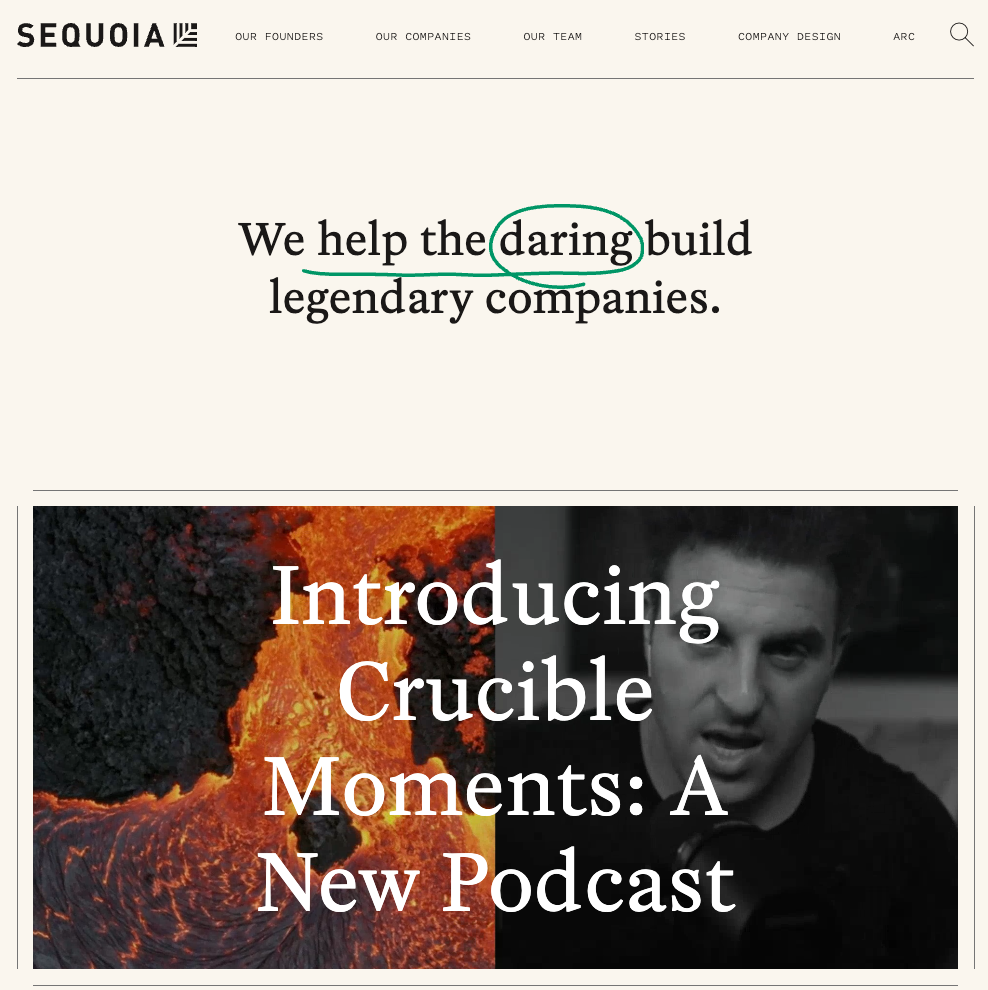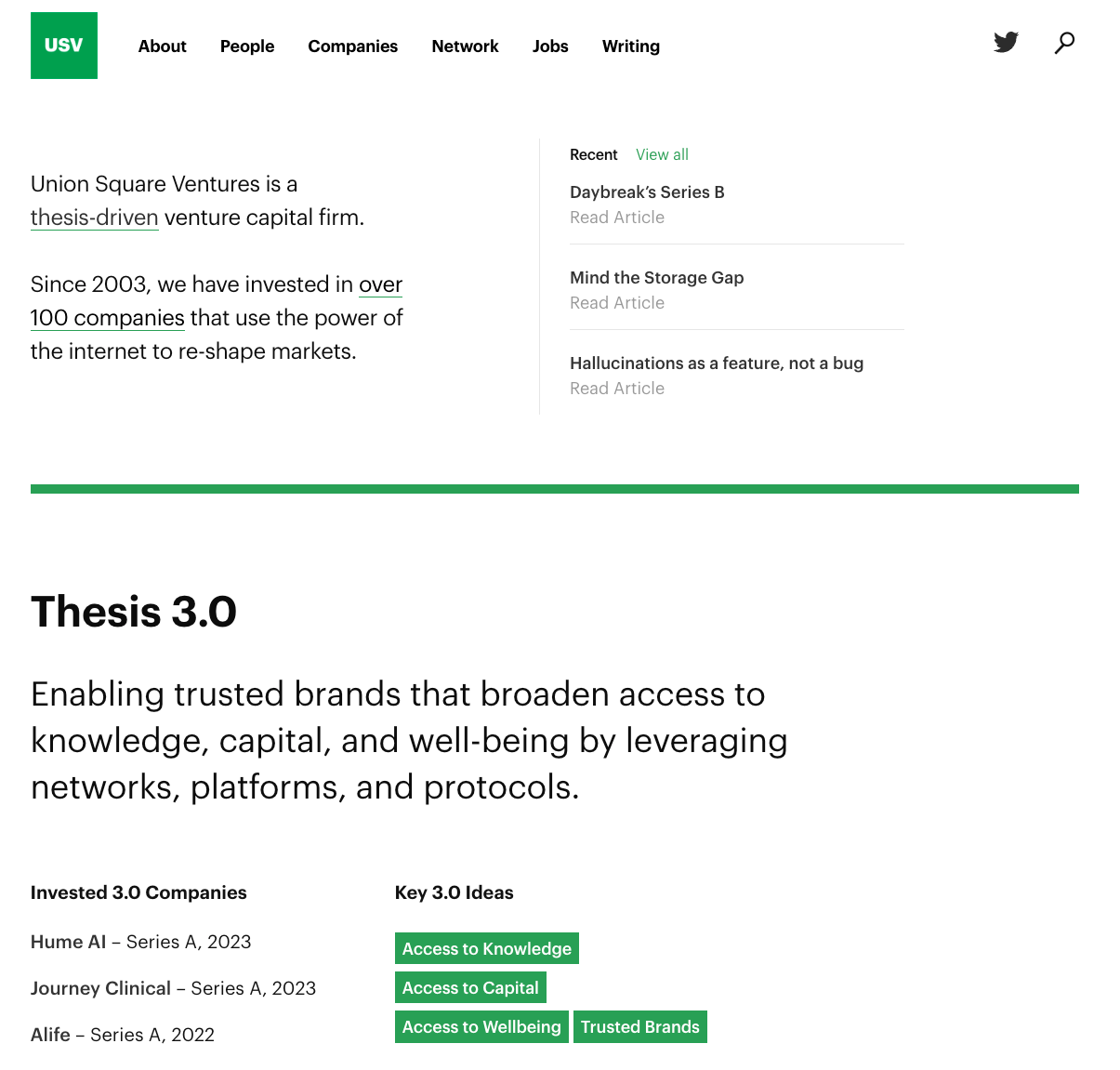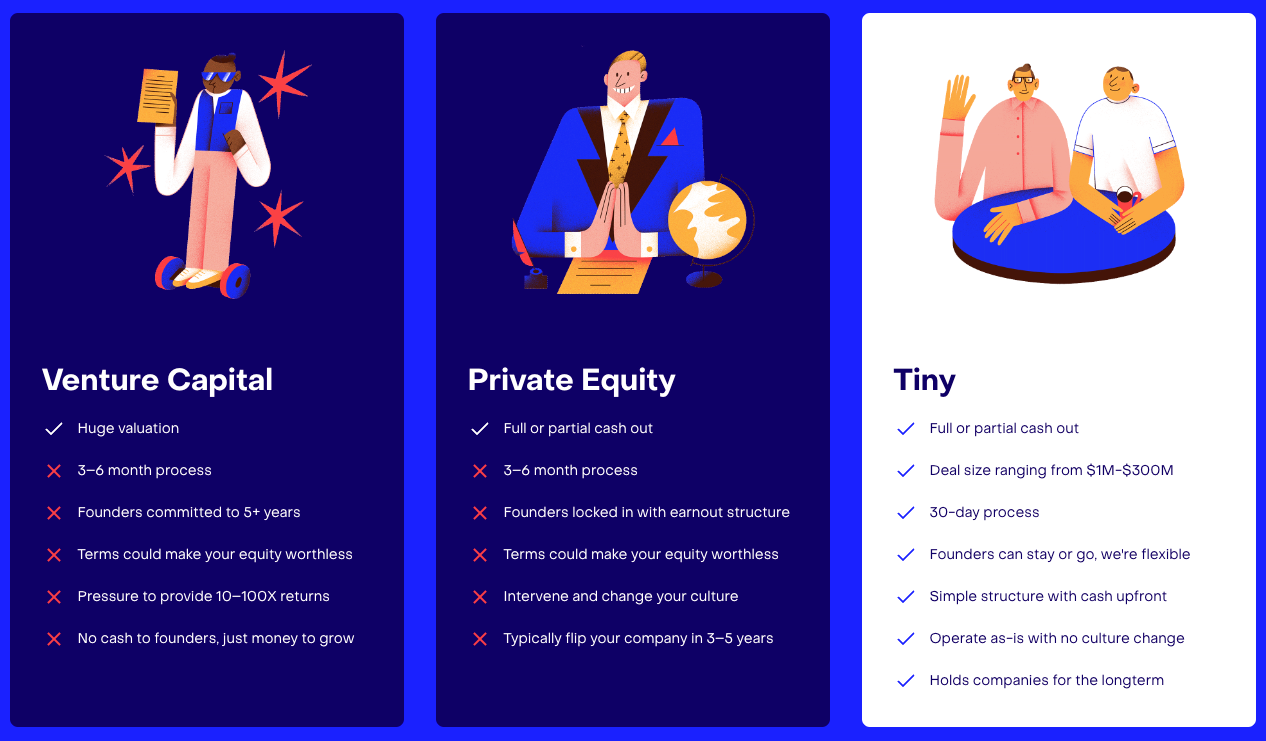Investors and their websites
I'm working on a small side project to brush up on my frontend skills. I'm building a simple website template for investors. While searching for inspiration I ended up analyzing the websites of a few well known venture capital, private equity, and holding companies. I wanted to know what purpose these websites served and how each investment firm differentiated themselves. Below are my takeaways.
It’s about deal flow
Investors are in the business of closing deals and their websites reflect this. They use their sites to market to founders/owners and potential limited partners (LPs).
Marketing to founders and business owners: Cash is a commodity; it’s undifferentiated. So, investors have to offer something unique to get a founder or business owner to take their money. Investors use their websites as one way to stand out to get high quality deal flow.
Marketing to potential LPs: Most investors start out with their own capital or capital they receive through their 1st degree connections. But, subsequent larger funds require attracting money from a broader set of LPs. When funds get to this stage they use their websites to market to LPs by showcasing prior success.
Website copy and design choices reflect positioning
The copy, design, and website structure say a lot about an investment company. Here are a few examples.
Sequoia understands founders
Almost every design, copy, and content decision Sequoia makes on their website is about spotlighting founders. They want founders to feel special. They want founders to ask themselves “which VC is going to understand my journey?” and then immediately think of Sequoia.

From the header copy Sequoia refers to founders as "daring". And, Sequoia’s role is to help those daring people become "legendary". Their content section features their “Crucible Moments” podcast that discusses key inflection points at startups. On the navbar the first linked page is to “Our Founders”, which spotlights the individuals behind the companies, not the companies themselves. In my opinion Sequoia lionizes founders a bit too much, but I get the appeal.
Union Square Ventures has unique ideas and sticks to them
As a contrast, you can hardly find anything about founders on USV’s website. Instead, they spotlight their ideas. Their homepage showcases the evolution of their investment thesis over the years. On the navbar, the first two links are for “About”, which digs into how USV invests and operates, and “People”, which profiles their general partners. Again, nothing about founders.

USV wants to convey that their investment company has unique and smart ideas generated by smart investors. At first glance, USV's website seems to cater exclusively to potential LPs. But, conveying a sense of focus and discipline that’s detached from personality or fads can itself be a differentiator to founders. Also, if you are a founder who took a thesis based approach to searching for startup ideas, you might be drawn to an investment company that values and believes in the same things.
Tiny makes deals happen fast
Tiny is my favorite example of using a website to demonstrate unique positioning vs other sources of capital. Tiny utilizes web components that are commonly used by SaaS companies, not investors. For example, they use product comparison cards to showcase the difference between Tiny and Venture Capital / Private Equity.

Look at the caricatures of these cards! The VC cartoon is all flash; he's riding an electric scooter and offering a glitzy, high valuation deal. The PE cartoon is a mix of a conniving Mr Burns from the Simpsons and a slicked hair, world-conquering Wolf of Wall Street type. In contrast are the nice, approachable cartoons representing the team at Tiny. And, the text on these product cards do a great job of highlighting the cons of selling your company to more traditional VC/PE.
A few takeaways for early funds
- When you’re early, you can’t impress through sheer volume of deals closed so give each one more space on the page.
- Focus on your personal profile, because that’s all you have when you start.
- There are a lot of ways to generate deal flow, including networking, writing, podcasting, personal brand building, conference talks, community building, offering free services and products, and in-house R&D. Whatever your strategy, feature it and make it engaging. Pull from examples already on the web.
- If you have a clear investment thesis, publicly share it in plain language!